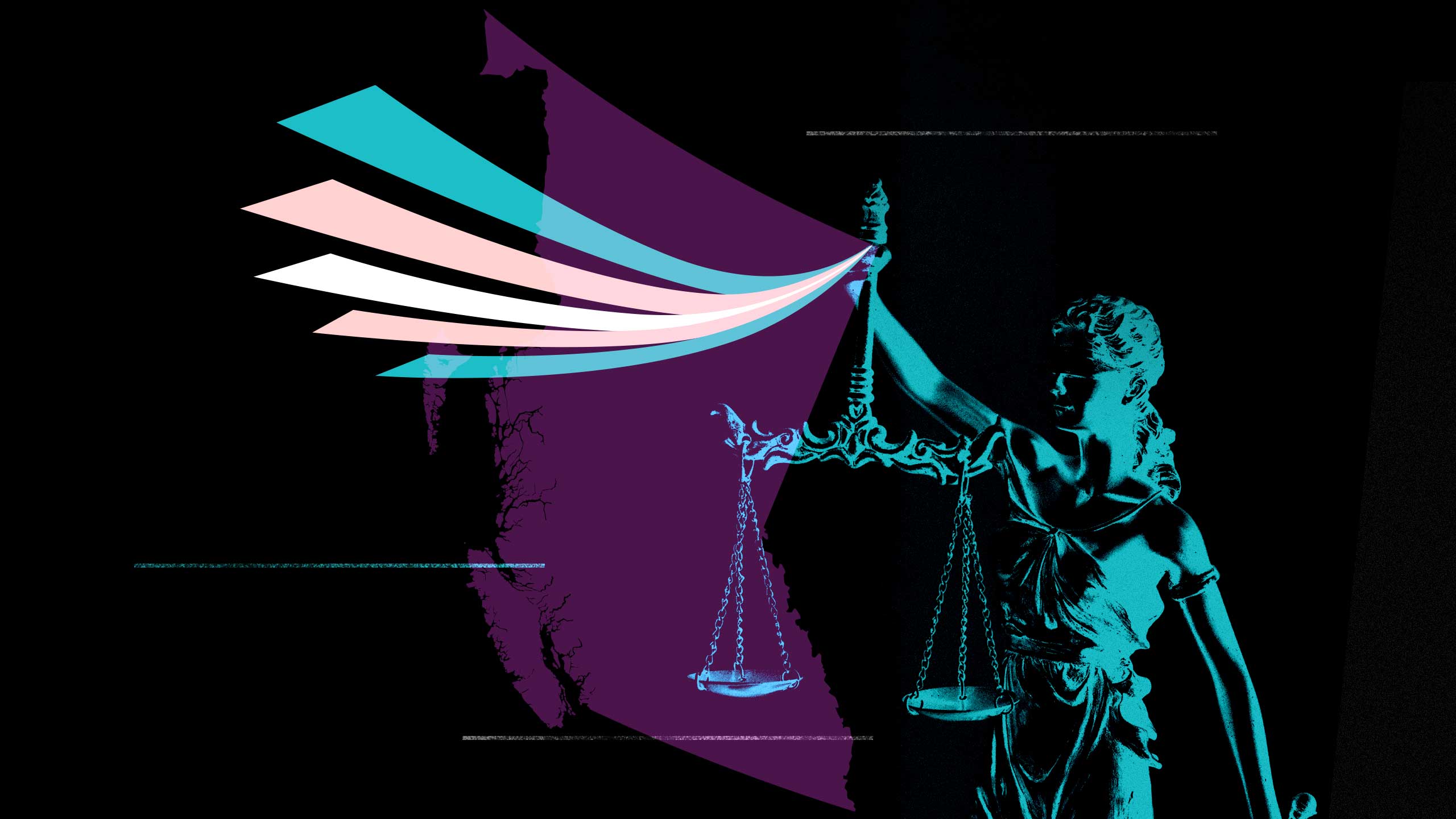For trans people, navigating the judicial system can feel daunting at the best of times, and unsafe at worst. If you have to present in court, how can you be sure your identity will be respected?
Courts in British Columbia are enacting changes to ensure trans inclusion—and ending misgendering—within the judicial system is a reality. On Dec. 16, 2020, the B.C. courts issued a letter from Chief Judge Melissa Gillespie setting the legal precedent that all identities must be respected in courtrooms province-wide. Now, when proceedings begin in courtrooms, lawyers or individuals introducing either themselves or a third party to the court will be directed to give their name, their honorifics and their pronouns, which will be used for the duration of proceedings—cementing protocol that for all parties present in the courtroom, lawyers and litigants alike, all lived identities must be recognized and protected.
While the Sexual Orientation and Gender Identity Community (SOGIC) section of the Canadian Bar Association B.C. branch has been working to educate about and advocate for trans and gender-diverse lawyers and legal professionals, this directive came to them from the court. It was prompted by informal discussions, led by LGBTQ2S+ lawyers, about how their needs were not being met in courtrooms. The courts used these conversations to begin drafting a directive in response to what they were hearing from SOGIC members, and sent a draft of a proposed plan to the SOGIC committee for consultation.
“[The courts] had a draft of the directive, and came to ask for feedback on it,” says Lisa Nevens, a Vancouver-based non-binary civil litigator and co-chair of the SOGIC comittee. “We were really excited to see that the court was moving in that direction, and we provided some feedback to them, based on the best practices that we know.”
“These changes have added to the momentum toward a more trans-inclusive justice system.”
The move came a year after the B.C. court of appeal brought in a new directive that would allow counsel to use “Mx.,” or simply “Counsel,” in place of the limited binary of “Mr.” and “Mrs.” It’s a step taken after years of informal education from an increasing number of trans lawyers. “These things have added to the momentum toward a more trans-inclusive justice system, of which the court’s new practice directions are an important part,” Nevens says. After LGBTQ2S+ lawyers have spent years fighting to be seen, the courts are finally beginning to officially catch up.
The new process fundamentally changes the way trans and non-binary individuals are treated in courtrooms, putting them on even ground with their cisgender peers. “I was already doing it,” says Nevens, who uses they/them pronouns. “But for me, it was actually the first time that everyone was doing it. It was kind of amazing to see. Suddenly, it wasn’t unusual to do and I didn’t have to stand out to do it. I didn’t have to feel awkward or be different.”
But this directive doesn’t just affect lawyers like Nevens. It also includes litigants in court as they are introduced to the proceedings. “Folks were worried about being misgendered more than they were about the litigation, which I think really highlights the disparity that was going on,” Nevens adds. “Cisgender people weren’t sitting there worrying about whether they’d be respected. That’s not quite even footing.”
Despite protections by the Human Right Commission, studies show that trans people are disproportionately represented and oppressed by the criminal justice system. Being misgendered is among that discrimination, an act of invalidation that strips you of your identity and experience.
“Folks were worried about being misgendered more than they were about the litigation.”
The directive is just a start, though. Nevens says there’s plenty of room to improve the inclusivity of the judicial system—from ensuring that court forms are inclusive to trans and gender diverse people, to enforcing gender-inclusive language in all areas of the court. And there are issues to address that go beyond just identity and proclamation. “Problems like gender-diverse washrooms, [because] as right now most of our courtrooms and courthouses still only have binary gender washrooms available. So that’s a bigger project,” Nevens adds.
Taking a step back from infrastructure and ratifying documents, there’s still the much broader picture to assess as well. “A lot of the access to justice issues for trans folks aren’t just about the justice system, they’re also about police and prisons and your neighbour, and whoever else in the street,” Nevens says. “The justice system is just one component of the broader society. And as society improves, hopefully, the access to justice will also continue to improve along with it.”
Correction: April 28, 2021 6:09 pmThis story has been updated to more accurately reflect the consultation process that led to the new court directive.


 Why you can trust Xtra
Why you can trust Xtra


